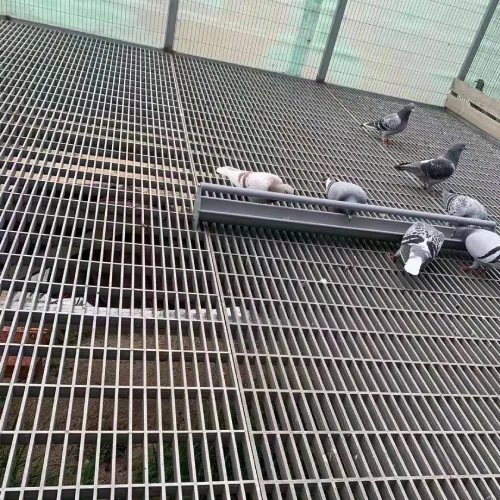loading...
- No. 9, Xingyuan South Street, Dongwaihuan Road, Zaoqiang County, Hengshui, Hebei, China
- admin@zjcomposites.com
- +86 15097380338
- Welcome to visit our website!
Benefits and Applications of Fiberglass Grating in Various Industries
Fibreglass Grating A Versatile Solution for Various Applications
Fibreglass grating, also known as fiberglass reinforced plastic (FRP) grating, has become a popular choice in various industries due to its strength, durability, and corrosion resistance. This innovative material offers significant advantages over traditional materials such as steel and wood, making it an ideal solution for a range of applications, including walkways, platforms, stair treads, and more.
Composition and Manufacturing Process
Fibreglass grating is composed of a composite material made from glass fibers and a resin matrix. The manufacturing process involves reinforcing plastic with glass fibers to create a solid, lightweight material that is incredibly strong. The grating is typically manufactured using two methods pultrusion and moulding. In the pultrusion process, continuous strands of glass fibers are pulled through a resin bath, and then formed into a desired shape while being cured. Moulding, on the other hand, involves pouring resin mixed with glass fibers into a mold and allowing it to cure. Both methods result in a material that is resistant to chemical corrosion, UV rays, and extreme weather conditions.
Advantages of Fibreglass Grating
1. Corrosion Resistance One of the standout features of fibreglass grating is its resistance to corrosion, particularly in environments that are damp, moist, or exposed to various chemicals. Unlike metal grating, which can rust and deteriorate over time, fibreglass grating maintains its integrity and strength, making it suitable for wastewater treatment plants, chemical processing plants, and marine applications.
2. Lightweight and Easy to Handle Fibreglass grating is significantly lighter than steel or aluminum grating. This makes it easier to transport and install, reducing labor costs and time. Its light weight does not compromise its load-bearing capabilities, making it a practical choice for many applications.
3. Safety Features The surfaces of fibreglass grating can be manufactured with non-slip properties, ensuring safety in environments where slip hazards are a concern. Additionally, its smooth surface minimizes hazards where people may trip or fall.
fibreglass grating

4. Longevity Thanks to its resistance to environmental factors, fibreglass grating offers a longer lifespan compared to traditional materials. This longevity translates to reduced replacement and maintenance costs over time.
5. Versatility Fibreglass grating is available in various styles, including close mesh and molded patterns, making it adaptable to numerous applications. It can be used in industries such as construction, food processing, petrochemical, and pharmaceuticals, among others.
Applications of Fibreglass Grating
Fibreglass grating is utilized in a wide range of applications across various sectors. In industrial settings, it can be found on catwalks, platforms, and staircases, providing a safe and reliable walking surface. In the chemical industry, its corrosion resistance makes it ideal for flooring and walkways that are exposed to hydraulic fluids and harsh chemicals. In the entertainment sector, it is commonly used for light fixtures and stage designs due to its versatility and aesthetic options.
It is also valuable in the construction sector for rooftop walkways and drainage applications, where it promotes water runoff while remaining safe for foot traffic. With its customizable nature, fibreglass grating can be designed to meet specific project requirements, including shapes and colors.
Conclusion
In summary, fibreglass grating stands out as an exceptional material for a plethora of uses across industries. Its resistance to corrosion, lightweight properties, safety features, durability, and versatility make it a preferred choice in environments where traditional materials may fail. As industries continue to seek out solutions that promote safety, efficiency, and longevity, fibreglass grating remains a leading option for the future. Whether used in industrial settings, commercial spaces, or residential projects, fibreglass grating offers a unique combination of benefits that are hard to match.
-
The Rise of FRP Profiles: Strong, Lightweight, and Built to LastNewsJul.14,2025
-
SMC Panel Tanks: A Modern Water Storage Solution for All EnvironmentsNewsJul.14,2025
-
GRP Grating: A Modern Solution for Safe and Durable Access SystemsNewsJul.14,2025
-
Galvanized Steel Water Tanks: Durable, Reliable, and Ready for UseNewsJul.14,2025
-
FRP Mini Mesh Grating: The Safer, Smarter Flooring SolutionNewsJul.14,2025
-
Exploring FRP Vessels: Durable Solutions for Modern Fluid HandlingNewsJul.14,2025
-
GRP Structures: The Future of Lightweight, High-Performance EngineeringNewsJun.20,2025
